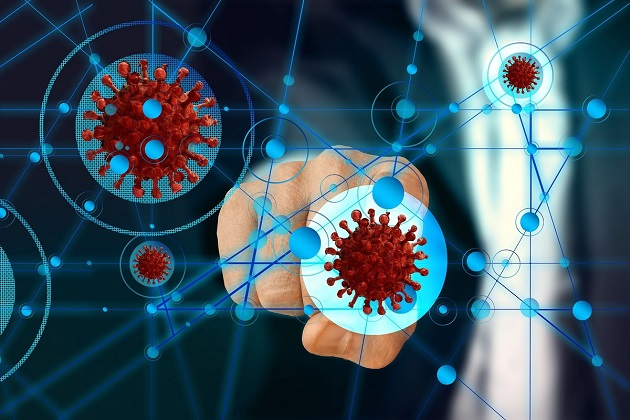When the COVID-19 pandemic struck in early 2020, doctors and researchers rushed to find effective treatments. A team has now developed a machine learning-based approach to identify drugs already on the market that could potentially be repurposed to fight COVID-19, particularly in the elderly. The system accounts for changes in gene expression in lung cells caused by both the disease and aging. That combination could allow medical experts to more quickly seek drugs for clinical testing in elderly patients, who tend to experience more severe symptoms. The researchers pinpointed the protein RIPK1 as a promising target for COVID-19 drugs, and they identified three approved drugs that act on the expression of RIPK1.
Early in the pandemic, it grew clear that COVID-19 harmed older patients more than younger ones, on average. “The prevalent hypothesis is the aging immune system,” she says. The stiffening lung tissue shows different patterns of gene expression than in younger people, even in response to the same signal. “Earlier work by the Shivashankar lab showed that if you stimulate cells on a stiffer substrate with a cytokine, similar to what the virus does, they actually turn on different genes.
The researchers zeroed in on the most promising drug repurposing candidates in three broad steps. First, they generated a large list of possible drugs using a machine-learning technique called an autoencoder. Next, they mapped the network of genes and proteins involved in both aging and SARS-CoV-2 infection. Finally, they used statistical algorithms to understand causality in that network, allowing them to pinpoint “upstream” genes that caused cascading effects throughout the network. In principle, drugs targeting those upstream genes and proteins should be promising candidates for clinical trials.
To generate an initial list of potential drugs, the team’s autoencoder relied on two key datasets of gene expression patterns. One dataset showed how expression in various cell types responded to a range of drugs already on the market, and the other showed how expression responded to infection with SARS-CoV-2. The autoencoder scoured the datasets to highlight drugs whose impacts on gene expression appeared to counteract the effects of SARS-CoV-2. “This application of autoencoders was challenging and required foundational insights into the working of these neural networks, which we developed in a paper recently published in PNAS,” notes Radhakrishnan.
Next, the researchers narrowed the list of potential drugs by homing in on key genetic pathways. They mapped the interactions of proteins involved in the aging and SARS-CoV-2 infection pathways. Then they identified areas of overlap among the two maps. That effort pinpointed the precise gene expression network that a drug would need to target to combat COVID-19 in elderly patients.

